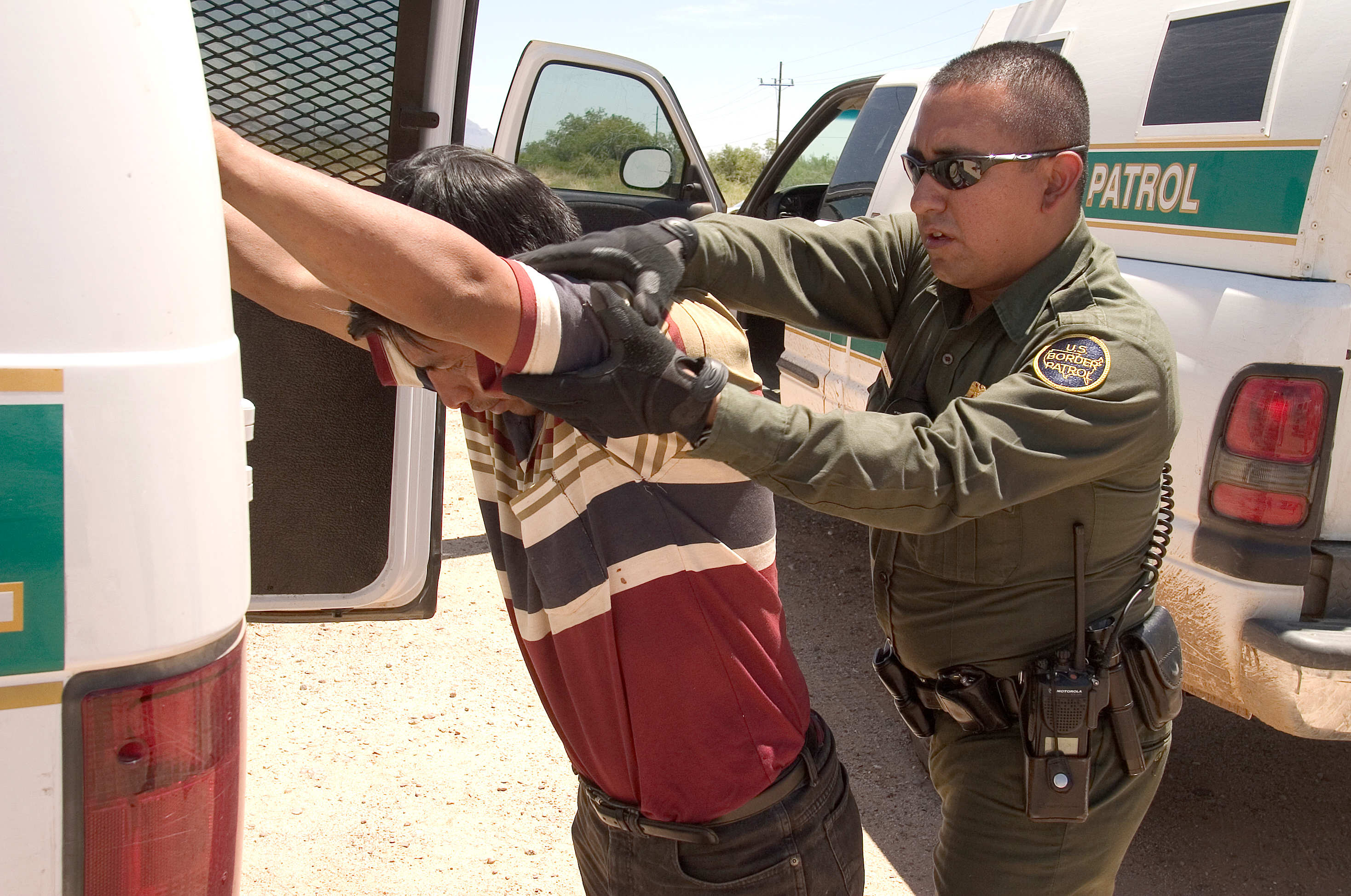I live and work in a city with a major university, not to mention your typical fare of public and private schools and increasingly pedestrian-friendly business areas, e.g. a thriving downtown. With over 44,000 college students rolling back into town this week for the start of another school year at the University of Illinois at Urbana-Champaign, I thought what better time to review a seemingly complicated area of the law: Crosswalks
TOP STORIES:
Top 15 Travel Gear Accessories
Infants On Plane: Twins’ Parents Offer Candy, No Apology
GUIDE: Are You Allowed To Bring Alcohol On A Plane?
GUIDE: Are You Allowed To Smoke E-Cigarettes On A Plane?
Who Has The Right of Way – Motorist or Pedestrian?
While this post will focus on Illinois law, the general concepts should remain constant throughout the United States, especially “Safety First!”
Simple Answer: Once pedestrians are in a crosswalk, they have the right of way and vehicles must stop (or yield depending on state/local law). Otherwise, vehicles have the right of way as pedestrians must wait until it is safe to enter the roadway in the crosswalk.
- Pay attention – Look up from your phone!
- Cross at the designated crosswalks when possible.
- Look left. Look right. Look left again.
- Walk, do not run, across the street.
- Wear light colored or reflective clothing at night.
- If you must walk in the street or shoulder, walk against traffic.

Complex Answer: Illinois saw a change in its crosswalk law in July 2010 that has increased the confusion for walkers and drivers alike. Some argue the law change has made it even more dangerous for all. The old law required drivers to yield and stop “only when necessary” to avoid a pedestrian. The new law requires drivers to come to a complete stop, not just yield, for pedestrians in all crosswalks – even those without stop signs or traffic lights.
With the law change came the mandatory placement of “Stop Here For Pedestrians” signs (see inset). Cars certainly do more damage and thus should exercise proper care when possible in any car vs. ped confrontation. Nevertheless, these signs do NOT give peds carte blanche to step out into traffic on a whim without yielding on an oncoming juggernaut of metal. Likewise, cars approaching such signs MAY stop out of courtesy, but they are not legally obliged to do so.
I like to encourage friendly pedestrian safety when I’m behind the wheel, but I am going to do so with similar attention paid to the potential driver following closely behind me that does not expect such a “courtesy stop” for walkers. Stopping for no one in the crosswalk or no walkers even present near the crosswalk causes confusion, traffic congestion and unnecessary delays. The exception to this is when I see children near the street or crosswalk, especially in a school zone.

What About An Approaching Vehicle vs. Pedestrian?
“Timing is everything.” — In Illinois, the walker must stay on the curb until it is safe to cross. The law (see below) states that the walker cannot step “into the path of a moving vehicle which is so close as to constitute an immediate hazard.” This is a subjective determination from all kinds of factors including the speed of the oncoming car, time of day, weather, road conditions, visibility, and so on.
Nevertheless, I think an “immediate hazard” conveys a more abrupt stopping of a vehicle than, say, an anticipated stopping for a stop sign intersection ahead. Put another way, if a vehicle is approaching a walker on the curb at the legal speed limit and the walker enters the vehicle’s path without giving it time to react, then the walker is violating the law (crosswalk or not). You must give the vehicle reasonable time to stop.
What Is A “Crosswalk” And Does It Require Road Markings?
While at an intersection, a crosswalk exists whether it is marked or unmarked. This is the case even if the sidewalk may not continue on the other side of the roadway. While away from an intersection, a crosswalk needs to have distinct lines or markings. At stop sign intersections, vehicles stop and yield to walkers as they do to other cars.

Some current Illinois laws related to crosswalks:
- A pedestrian shall obey the instructions of any official traffic control device specifically applicable to him, unless otherwise directed by a police officer. 625 ILCS 5/11-1001.
- When traffic control signals are not in place or not in operation the driver of a vehicle shall stop and yield the right-of-way to a pedestrian crossing the roadway within a crosswalk when the pedestrian is upon the half of the roadway upon which the vehicle is traveling, or when the pedestrian is approaching so closely from the opposite half of the roadway as to be in danger. 625 ILCS 5/11-1002(a).
- No pedestrian shall suddenly leave a curb or other place of safety and walk or run into the path of a moving vehicle which is so close as to constitute an immediate hazard. 625 ILCS 5/11-1002(b).
- Whenever any vehicle is stopped at a marked crosswalk or at any unmarked crosswalk at an intersection to permit a pedestrian to cross the roadway, the driver of any other vehicle approaching from the rear shall not overtake and pass such stopped vehicle. 625 ILCS 5/11-1002(d).
- Every pedestrian crossing a roadway at any point other than within a marked crosswalk or within an unmarked crosswalk at an intersection shall yield the right-of-way to all vehicles upon the roadway. 625 ILCS 5/11-1003(a).
- Notwithstanding other provisions of this Code or the provisions of any local ordinance, every driver of a vehicle shall exercise due care to avoid colliding with any pedestrian, or any person operating a bicycle or other device propelled by human power and shall give warning by sounding the horn when necessary and shall exercise proper precaution upon observing any child or any obviously confused, incapacitated or intoxicated person. 625 ILCS 5/11-1003.1.
Summary
- Walkers cannot suddenly leave a curb into the path of a moving vehicle which is so close as to constitute an immediate hazard.
- Walkers in crosswalks have the right-of-way and cars must stop.
- Walkers in the street may not have the right-of-way, but drivers should still yield.
- Walkers at the curb don’t have the right-of-way, and drivers don’t have to yield or stop for them.
- Drivers do not have to stop every time they see a crosswalk sign – only if there is a pedestrian actively crossing.
____
@travelblawg
facebook.com/travelblawg
Subscribe in the sidebar!
Disclosure of Material Connection: Some of the links in the post above are “affiliate links.” This means if you click on the link and purchase the item, I will receive an affiliate commission.











A pedestrian follows the law and steps into the crosswalk at an appropriate time. The driver approaches and comes to a stop. Does the driver have to remain stopped for the entire time it takes for the pedestrian to traverse from curb to curb?
My short answer would be: No.
The requirement of the driver to “stop and yield the right-of-way to a pedestrian” would cease once that pedestrian (and any “new” peds) are once again out of danger. One might argue that a ped ANYWHERE in the street is still in danger. I think it depends on the crosswalk, e.g. crosswalk across four lanes of traffic and ped is almost to opposing curb over two lanes away from you, your stopping and yielding to ped’s right of way has concluded.